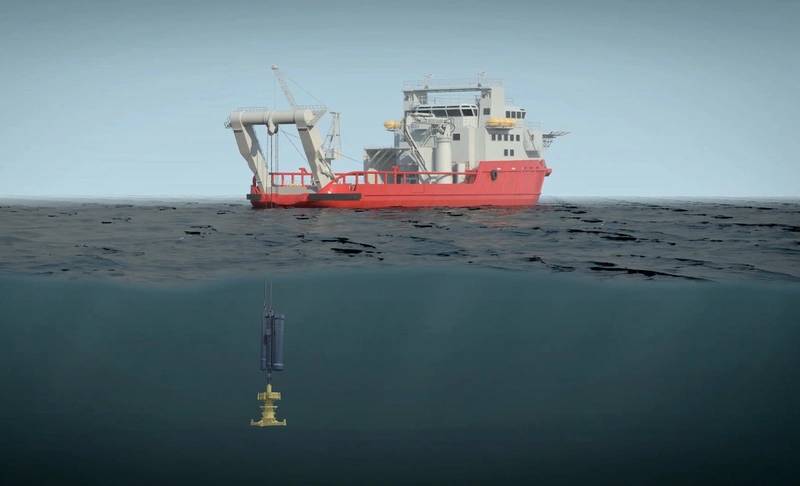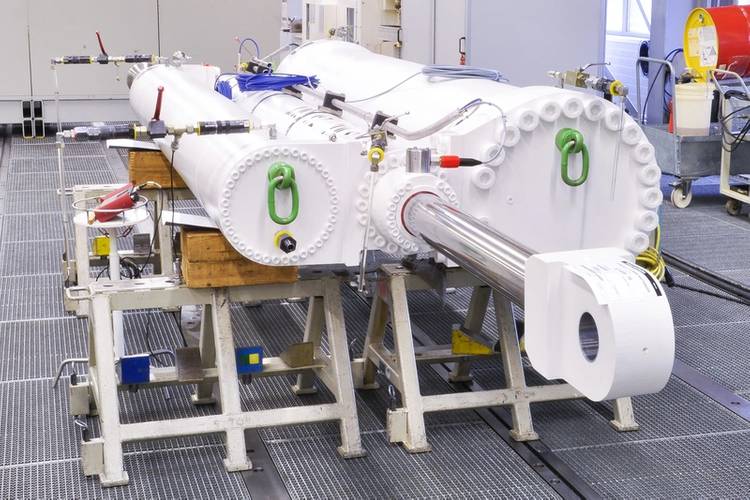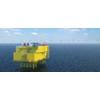A new ‘split hoist’ heave compensation system from Bosch Rexroth combines active and passive heave compensation (AHC and PHC) elements with a sophisticated control system to enable AHC functionality to be added to new and existing hoisting installations. Using a modular and mobile design, the new split hoist system is especially interesting for use with existing multi-part reeved hoisting equipment.
The new split hoist heave compensation system supports a much higher working load, while also improving system efficiency by as much as 80 percent, according to the manufacturer. A passive in-line heave compensator, supports the load and passively compensates for some of the ship’s movement. The passive in-line system is hoisted and held by an existing winch or crane.
An actively controlled winch, typically mounted on the ship’s deck, then compensates for the remaining movement of the load. A motion reference unit measures movement of the vessel, and the system reacts to control the load’s position relative to the seabed. In this way, the system requires only 20 percent of power compared to conventional AHC systems.
The new system was developed and designed fully in-house by Bosch Rexroth, and a first prototype has been built. With the help of Seaway Heavy Lifting, who also showed interest in the concept, the protoype was tested in real life conditions.
“We had to overcome a number of technical and operational challenges for the split hoist system in the two and a half years from concept to construction,” said Patrick Verbakel, Technical Sales Manager Offshore. “Numerous simulations and tests were carried out to confirm the prototype could achieve the expected performance, and to ensure it would comply with the required safety standards.”
In June 2017 further testing will be carried out, again with help of Seaway Heavy Lifting, for offshore deep water operation. While these operations have been simulated and thoroughly analyzed, real-life testing will provide proof of concept.
The crane vessel Oleg Strashnov will be fitted with the split hoist heave compensation system to test performance and collect data. The control system is designed to control load position down to 2,000 meters below sea level, based on vessel position and forces on the cables.
“It has been a very interesting and successful project,” Verbakel said. “In addition to bringing a new solution to the market, we have also increased our know-how and experience in several areas, including passive compensation systems. We are certain that the clear benefits of the Bosch Rexroth split hoist system will appeal to customers with demands for lifting a wide range of applications, possibly even exceeding 1,000 metric tons.”

















 December 2025
December 2025



